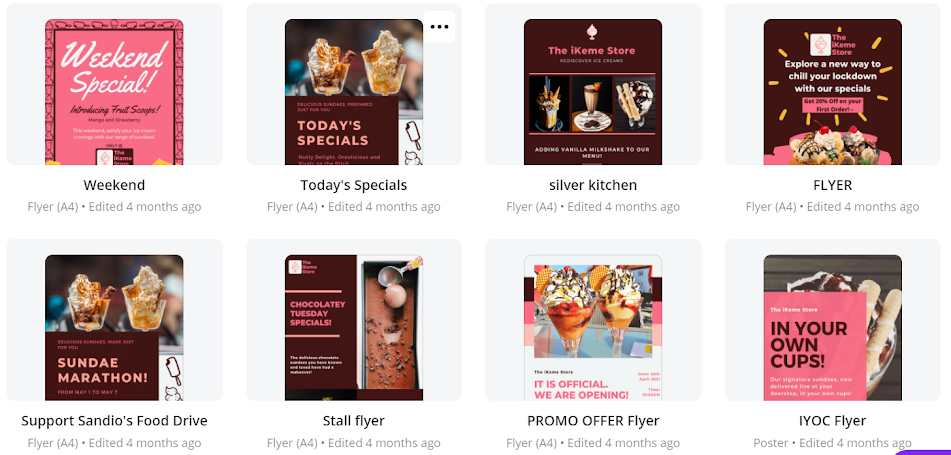Welcome back! I am Hari, a business student in Grade 11. You're reading the fourth post in a series of 9 posts. If you have no clue as to what we are discussing here, you can begin with this post.
In today's post, I will be covering the importance of marketing and promoting your products to push off sales.
The Marketing Mix (4 P's)
Think of it as a cake. Each element in the marketing mix can relate to an ingredient in this analogy. Here's a picture to better represent this analogy:
You must focus on how to create a widely accepted product. For this, you must understand the tastes and preferences of the customers. For help, check out
this post. Not only does the product have to be satisfactory; it should attract the attention of the customers. One way to do that is through the packaging. The first appearance of the product must strike the customer with a positive impression of it. However, a lot of factors have to be considered for packaging:
- Is it logical for the type of product I sell? It would be illogical to sell water in a cloth bag.
- Does it take too much inventory space? If a product's packaging is 50% larger than the product's size, wouldn't that affect your inventory space?
- Can it be propped on a shelf? If it rolls off and breaks, who bears the cost?
These are just some of the many factors you need to consider. In fact, businesses employ a specific R&D department just for good product and packaging.
Price
Sales happen only when your product is sold at the right price. Too cheap and customers will start doubting its quality. Too expensive and customers would consider alternatives. Therefore, pricing must be dynamic, adjusting according to fluctuations in the market trend. There are a few pricing strategies that I will be explaining in this post.
Competitive Pricing
This sort of pricing is adopted when the market has lots of competition. Businesses tend to keep prices the same as those of competitors, or a little less. The motive behind this strategy is to gain a large market share. Sales can be high, but the turnover could not. Profits would reduce unless the cost of production is lowered. However, lower production costs would result in quality issues, which may harm the business's reputation.
Penetration Pricing
If you're a new business that is just entering a market, this is the pricing strategy that needs to be adopted. The prices are set to be much lower than those of competitors, so that initial sales are met. However, this low price could be misunderstood by customers, who may think the product to be of inferior quality. This is the type of pricing one must adopt if they are a new entree in a fairly saturated market.
Promotional Pricing
This pricing strategy is adopted when a business aims to increase short-term sales. The price is dropped for a certain amount of time, so that customer demand increases. Once the set target has been achieved, the price will be reverted to what it was before. This strategy will help you clear off redundant stock. The only drawback is that revenue will be slightly less for that short period.
Cost-Plus Pricing
A simple, straightforward strategy of pricing. As the name suggests, this strategy involves the fixed addition of a certain amount on the cost of producing a product. It is easy to apply and will fetch you a guaranteed profit per unit sold. However, if production costs increase, you have no option but to increase the price, which could put off customers.
Price Skimming
This is a strategy used only when you create a product for which no market exists. If your product is a new invention or a developed version of something that exists, you can exploit the customers by charging a very high price. The factor of its novelty will act as your selling point, which will give you the sales and profits needed to grow. However, just like crocodiles who follow a crocodile because he finds himself lots of food in a pond, hungry competitors will try to enter this market. However, if you patent it, a steady stream of profit can be assured.
Place
You should select an ideal location for selling your product to the customer. You wouldn't want to have a store located in the middle of the Atlantic Ocean and expect a flurry of customers daily. Therefore, your locational decisions must be taken with a good understanding of customer demographics.
Promotion
You must identify the best possible way to promote your product to the largest number of customers. The methods I used were flyer distribution, discounts and WhatsApp marketing. By promoting your product effectively, you are basically securing yourself at least 5-10 customers. Ineffective and meaningless promotions can tarnish the reputation of your business.
Means I Utilised
Flyers
These are the most effective way to communicate something to a fair-sized audience of, say, 100 people. I made use of flyers to convey my daily offers, promotional campaigns, product launches and more. Flyers can contain pictures that can cause a positive impact on customers.
Canva is a very popular and easy-to-use website to create flyers. They provide a vast stockroom of templates and pre-made flyers for you to just edit, zip and zoom!
WhatsApp Marketing
Since I had digital flyers, I thought, How best to send them? WhatsApp is a popularly used text and multimedia exchanging service that has a global user-base of 2 billion people. I employed WhatsApp to act as my marketing tool. This proved effective, as people got notified every time I sent out a new flyer.
Discounts
Discounts are to people in the same way nectar is to bees. Customers swarm around any business that has discounts. It is natural because that is a psychological impulse that all humans possess. It is up to businesses to make the most of this psychological impulse.
Discounts, as I explained earlier, will help push off initial, or short-term sales. However, here's something to remember: If you keep giving discounts, customers will get the impression that you are desperate. Use discounts strategically, like once a week or once a month, etc.
With that, we come to the end of this post. I believe now you have the necessary knowledge to market and promote your products to your customers. I will see you in the next post. So long!
Next post: https://thebusinessbot.blogspot.com/2021/09/word-of-mouth-for-advertising.html



Comments
Post a Comment
What did you think about this read?